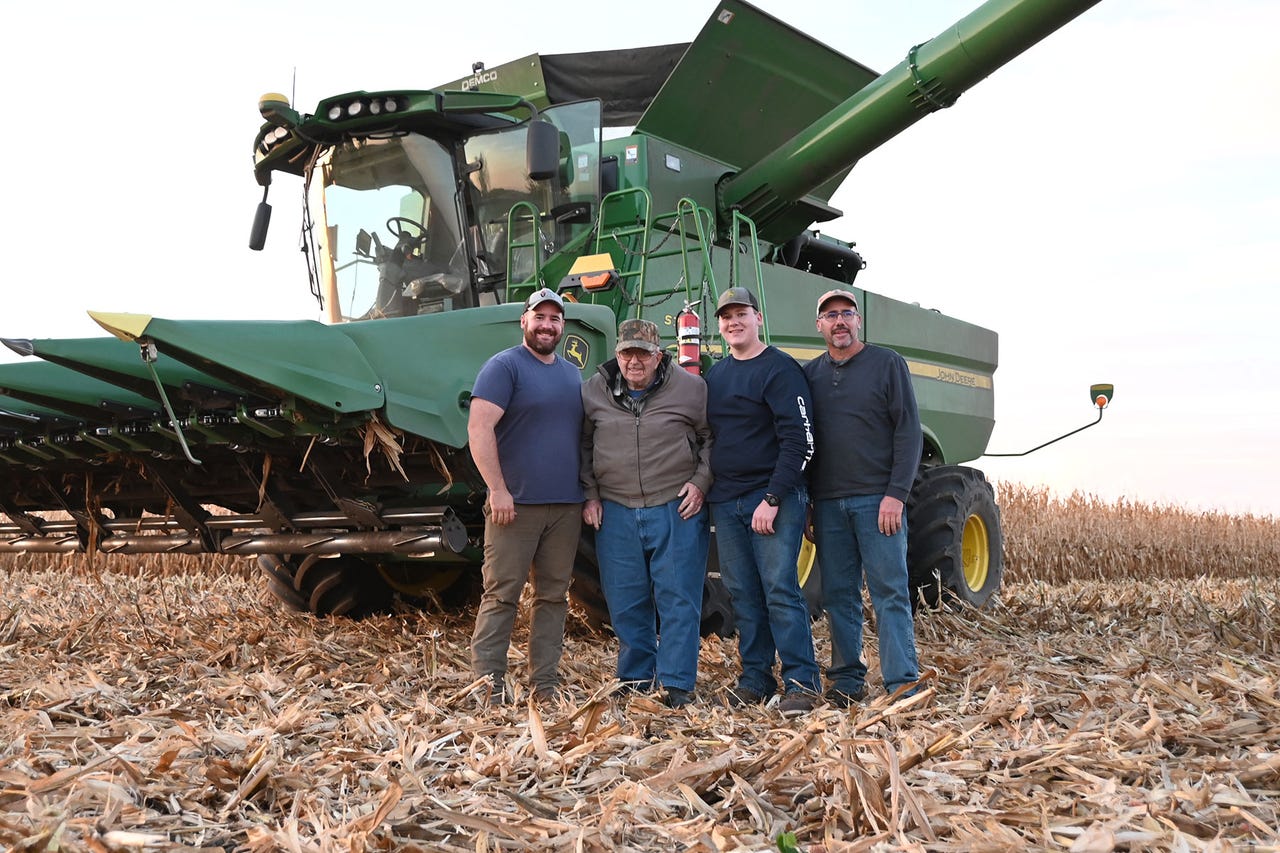Think back. Close your eyes if you have to. What do you remember from the first few harvests, back when you were a young farmer?
My husband paused when I asked him that, like he didn’t want to.
“I can remember selling corn for $1.97.”
I can remember the LDP game, and neighbors coming over late at night so we could hover over my Prairie Farmer fax machine and fax their LDP forms to the Farm Service Agency office. LDP stood for Loan Deficiency Payment, a government program to make sub-$2 corn both less painful and more complicated, with math that used yesterday’s prices on today’s sales.
Clearly, we started farming in the 1900s.
Several years ago, but not quite back to the 1900s, I stood on Tim Seifert’s farm near Auburn, Ill. He told me how an old farmer once told him you get 40 crops in your farming career. I thought that sounded like a pretty big number, the kind that was far off for us. But here we are at 28. That happened awful fast.
But also slowly, especially when I think back to harvests as a young mom with three kids under 5. Those were hard seasons, where solo parenting for weeks on end meant a lot of spaghetti and tears. Sometimes the kids cried, too.
Or the years when three kids had 23 after-school activities and zero licenses to drive. Small countries have been invaded with less planning than what it took to get them where they needed to be. Homecoming week nearly killed me dead.
But they were sweet years, too, with pork chop sandwiches on tailgates. Plenty of teasing and giggling and begging to ride another round. Now, they run the equipment and take themselves to wherever they need to be. I should be getting more sleep. Funny how it doesn’t work that way.
Bigger math
The math has changed for farm families, too. A 2025 crop is both more valuable and more expensive than a 1998 crop. The margins have narrowed.
Two-dollar corn has become $4 corn. A good corn yield went from 200 bushels to 300 bushels. Cost to put in a corn crop went from $100 an acre to $500. A $100 bag of seed is now $300, and nitrogen that was $200 a ton is now $800.
Land that cost $3,000 an acre now brings $20,000. The tractor that was $100,000 back then is closer to $200,000 today. The pickup that ran $35,000 in 1998 will set you back $80,000 in 2025.
The numbers were less back then, but so was the pressure. My husband, John, agrees and half smiles.
“Back then I worked for Dad. If the ship went under, I didn't have much.”

Early on, we didn’t manage employees, and we rarely lost sleep over selling cattle. My mother-in-law and I drove trucks at harvest, with preschoolers strapped into car seats.
In 1998, high-tech farming meant a yield monitor and grid mapping and RoundupReady beans. Today, it’s drones and autonomous tractors and sprayers that see weeds.
And in 1998, we were fresh off the Freedom to Farm bill. Today we’re pushing seven years since Congress last passed a real farm bill. We’re still getting government bailouts.
Everything changes. And then nothing does.
We still laugh around a tailgate. We still celebrate when the yield monitor jumps up to a bigger number. We still roll into harvest excited to see how we did. We still learn what worked and what didn’t. And we still use it all to figure out what we’ll do next year.
The Midwest doesn’t have soaring mountains and endless oceans. But we have serendipity — the idea that change is always on the horizon. A new season. Another harvest. Another chance.
Here’s to a bountiful one for us all — no matter how the corn yields.
Comments? Email holly.spangler@farmprogress.com.